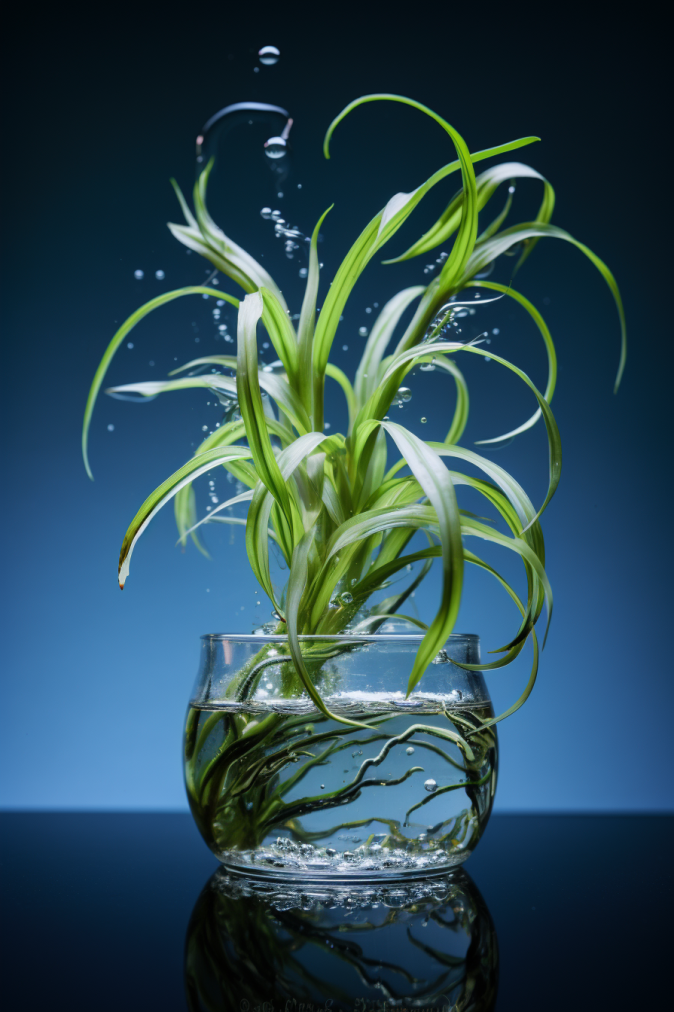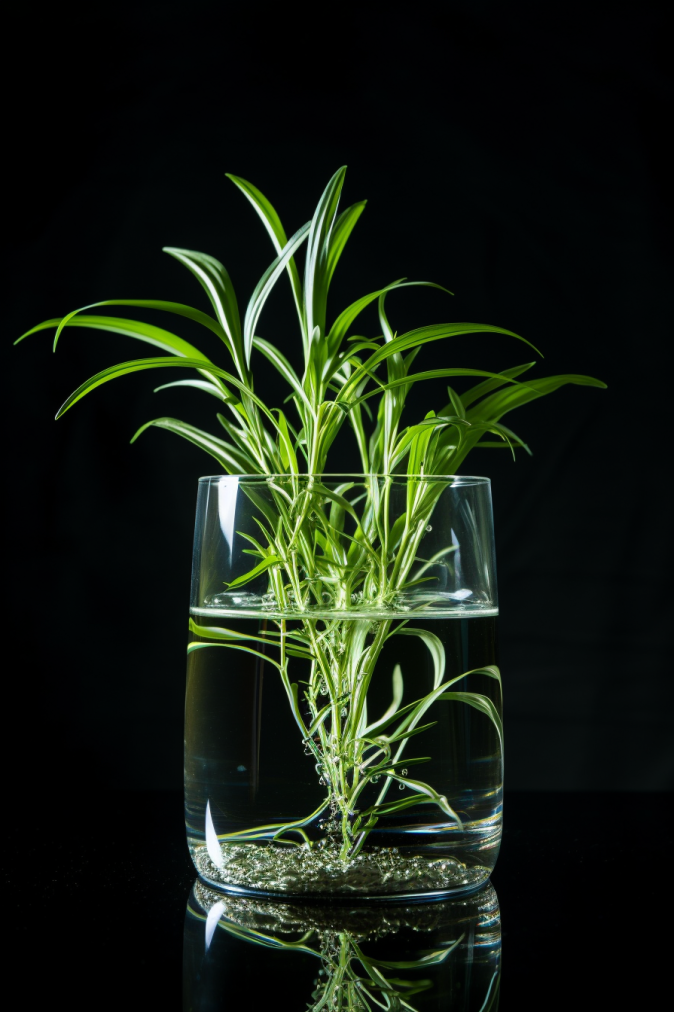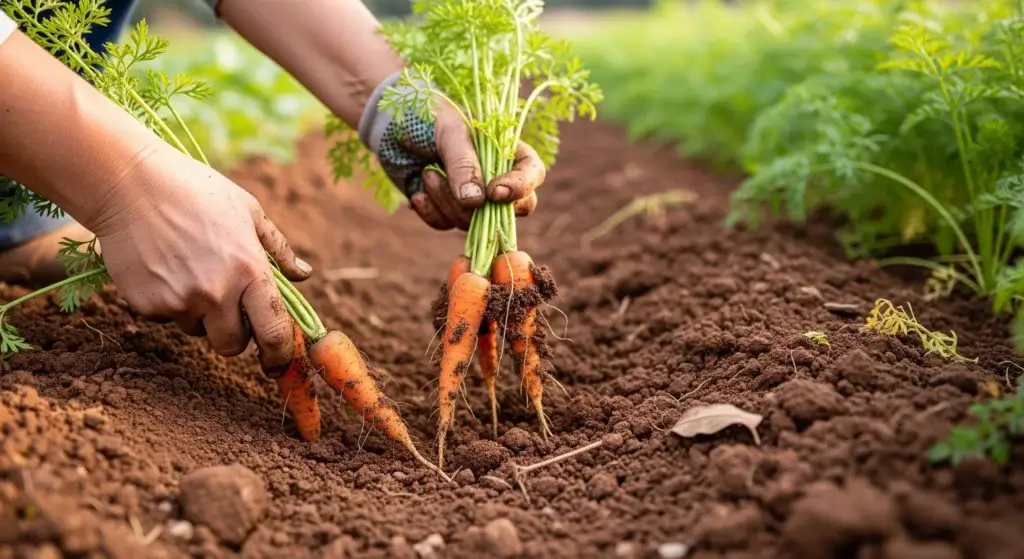
Cultivating spider plants in water stands out as a favored technique for propagating these hardy plants.
This article delves into the process of growing spider plants in water, outlining the advantages and disadvantages of this method.
Additionally, we’ll explore the duration for which a spider plant can thrive in water.
The article concludes with a summary and addresses some commonly asked questions to provide a comprehensive understanding of water propagation for spider plants.
How to Grow Spider Plants in Water
Growing a spider plant in water is a straightforward process that can be accomplished by following these detailed steps:
- Read also: Guide to Thriving Spider Plant Care Indoors
- Read also: Brown Tips For Healthy Spider Plants
Choose a jar or container
Choose a clean jar or container that offers ample width for the spider plant’s growth.
The container’s width is crucial for accommodating the plant’s expanding foliage.
Equally important is the presence of drainage holes, a key feature preventing water stagnation that could harm the plant’s roots.
Add a layer of gravel or stones
Begin by placing a layer of gravel or small stones at the container’s base.
This strategic addition serves a dual purpose: providing essential support to the plant and preventing the roots from becoming excessively saturated.
Proper drainage is fundamental to maintaining a balanced and healthy water environment for your spider plant.
Add potting soil
Add a thin layer of well-draining potting soil specifically formulated for spider plants.
The choice of soil is vital to ensure it offers the right balance of aeration and moisture retention.
The soil depth should be adequate to support the plant’s root system and subsequent growth.
Plant the spider plant
Gently position the spider plant in the soil, paying close attention to ensuring comprehensive coverage of its roots.
Take care to place the roots securely in the soil, and then proceed to gently press the soil around the roots.
This ensures the plant is firmly in place, promoting stability as it adapts to its water-based environment.
Add water
Once the plant is securely positioned, the next step is to fill the container with water.
Maintaining a precise water level is crucial—aim for it to be approximately an inch below the leaves of the spider plant.
This careful measure ensures that the plant receives an adequate water supply while strategically preventing the leaves from coming into direct contact with water.
Position the plant
After introducing water, strategically position the container in an area with bright, indirect light.
Spider plants thrive under these conditions, as direct sunlight may lead to leaf drooping.
By providing the right balance of light, you promote optimal photosynthesis and encourage healthy growth.
Monitor and adjust
A key aspect of successful water propagation is vigilant monitoring.
Regularly check the water level and make adjustments as needed.
Spider plants exhibit the unique ability to absorb water through their leaves. Hence, it’s imperative to ensure that the leaves remain above the water surface.

Pros and Cons of Growing Spider Plants in Water
Delving into the method of growing spider plants in water presents distinct advantages and disadvantages, offering a comprehensive view for prospective plant enthusiasts:
Pros
Easier propagation
One of the notable advantages of water propagation is the ease with which new baby plants can be rooted from the parent spider plant.
This straightforward method simplifies the process of expanding your spider plant collection.
Less soil needed
Growing spider plants in water requires minimal soil, offering a cost-effective option, particularly for individuals on a budget.
This advantage makes water propagation an accessible choice for those looking to propagate their spider plants without investing heavily in soil.
Low maintenance
Spider plants cultivated in water demand less maintenance compared to their soil-grown counterparts.
This makes them an attractive option for individuals seeking a low-maintenance plant propagation method, allowing for a more hands-off approach to care.
Cons
Root rot
An inherent risk associated with growing spider plants in water is the potential for overwatering, leading to root rot.
Root rot can have detrimental effects, causing the plant to wilt and eventually perish.
Careful monitoring of water levels and maintaining an appropriate balance is crucial to mitigate this risk.
Algae growth
The water-based environment can encourage the growth of algae, posing a challenge for spider plants.
Algae compete with the plant for essential nutrients and oxygen, potentially impacting its overall health.
Consistent observation and preventive measures are essential to address and minimize algae growth.

How Long Can You Keep a Spider Plant in Water
The duration for which a spider plant can thrive in water depends on factors such as its growth rate and the quality of the water provided.
Generally, spider plants can be sustained in water for several weeks or even months.
To ensure the plant’s well-being during this period, regular monitoring of its health is essential.
Additionally, adjusting the water level as needed becomes a crucial practice to maintain an optimal environment for the plant’s continued growth and vitality.
By attentively managing these aspects, you contribute to the sustained well-being of your spider plant throughout its time in a water-based habitat.
How Often Should You Change the Water?
Maintaining the water quality for spider plants grown in water is crucial to prevent complications like salt buildup and algae growth.
To ensure optimal plant health, it is recommended to change the water regularly.
The suggested interval for water changes when cultivating spider plants in water is ideally every 5-7 days.
This routine helps mitigate potential issues, especially when using tap water that might lead to brown tips on the plant.
The importance of this practice, emphasizing a weekly water change to prevent salt buildup and promote a healthy water environment for spider plants.
Additionally, keeping the water level consistently at one or two inches and replenishing it with fresh water as it evaporates is essential for successful spider plant water cultivation.
Adopting these practices contributes to maintaining an ideal water condition, ensuring the sustained health and vitality of your spider plant.

- Read also: The Secrets of the Perfect Spider Plant Soil Mix
- Read also: How Often Should You Water Your Snake Plant?
Conclusion
Cultivating spider plants in water stands out as a favored and straightforward method for propagating these resilient plants.
By adhering to the outlined steps and attentively monitoring the plant’s health, you can achieve the successful growth of a spider plant in water.
This method is characterized by its low-maintenance nature and cost-effectiveness, making it an excellent choice for individuals seeking a hassle-free and budget-friendly option for propagating spider plants.
FAQs
Change the water every few weeks, depending on the plant’s growth rate and the water quality.
Yes, you can use tap water for your spider plant, as long as it is not too hot or cold. Tap water is fine for spider plants, but distilled or filtered water is even better.
Check the plant’s leaves for drooping or yellowing, as these can be signs of underwatering. Additionally, monitor the water level and adjust it as needed to ensure the plant’s health.
Yes, you can use any clean jar or container that is wide enough to accommodate the spider plant’s growth and has drainage holes to prevent water from stagnating.



